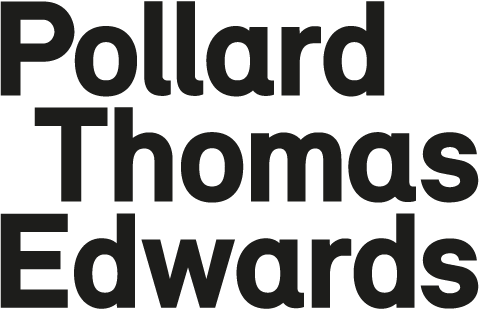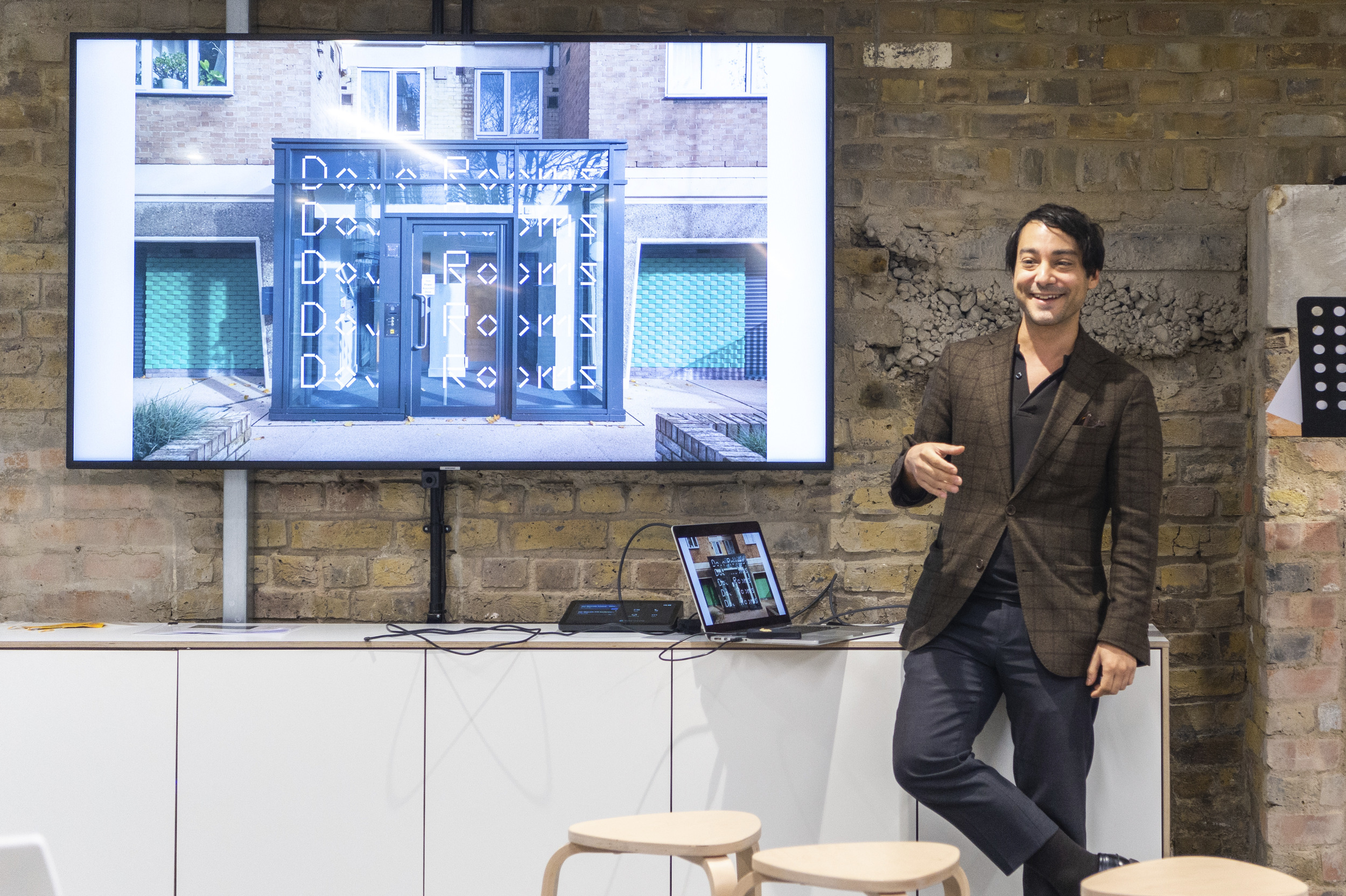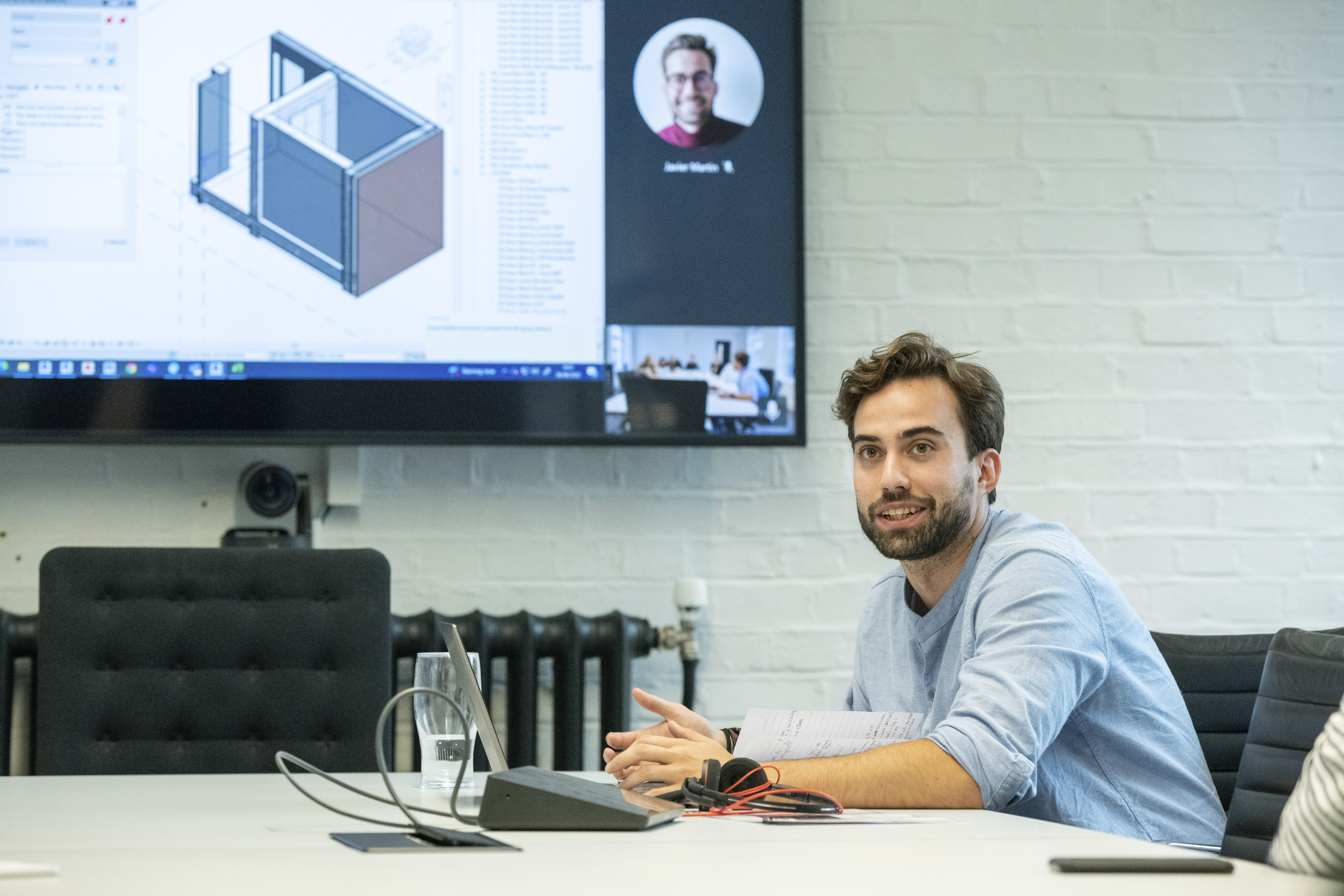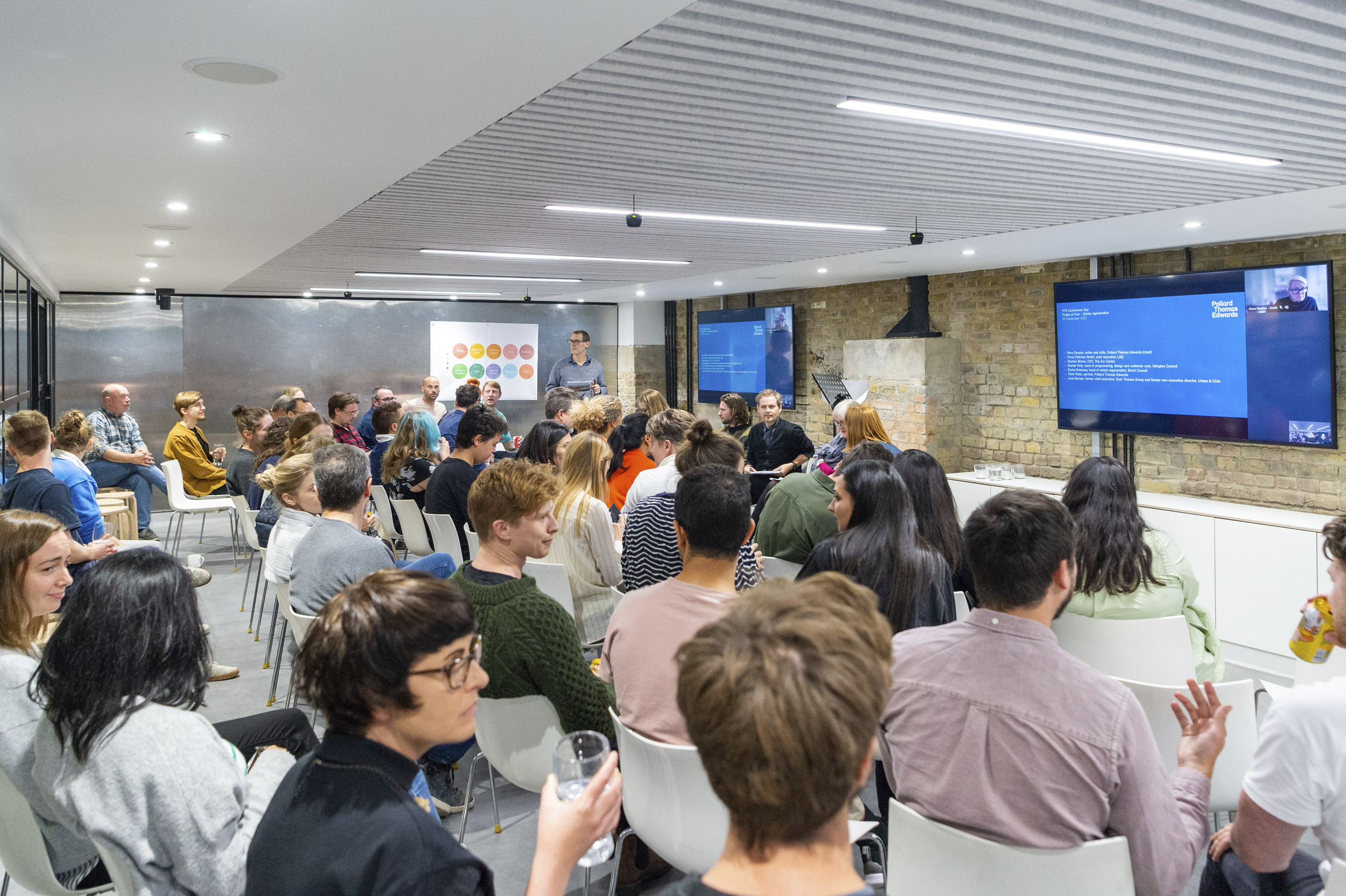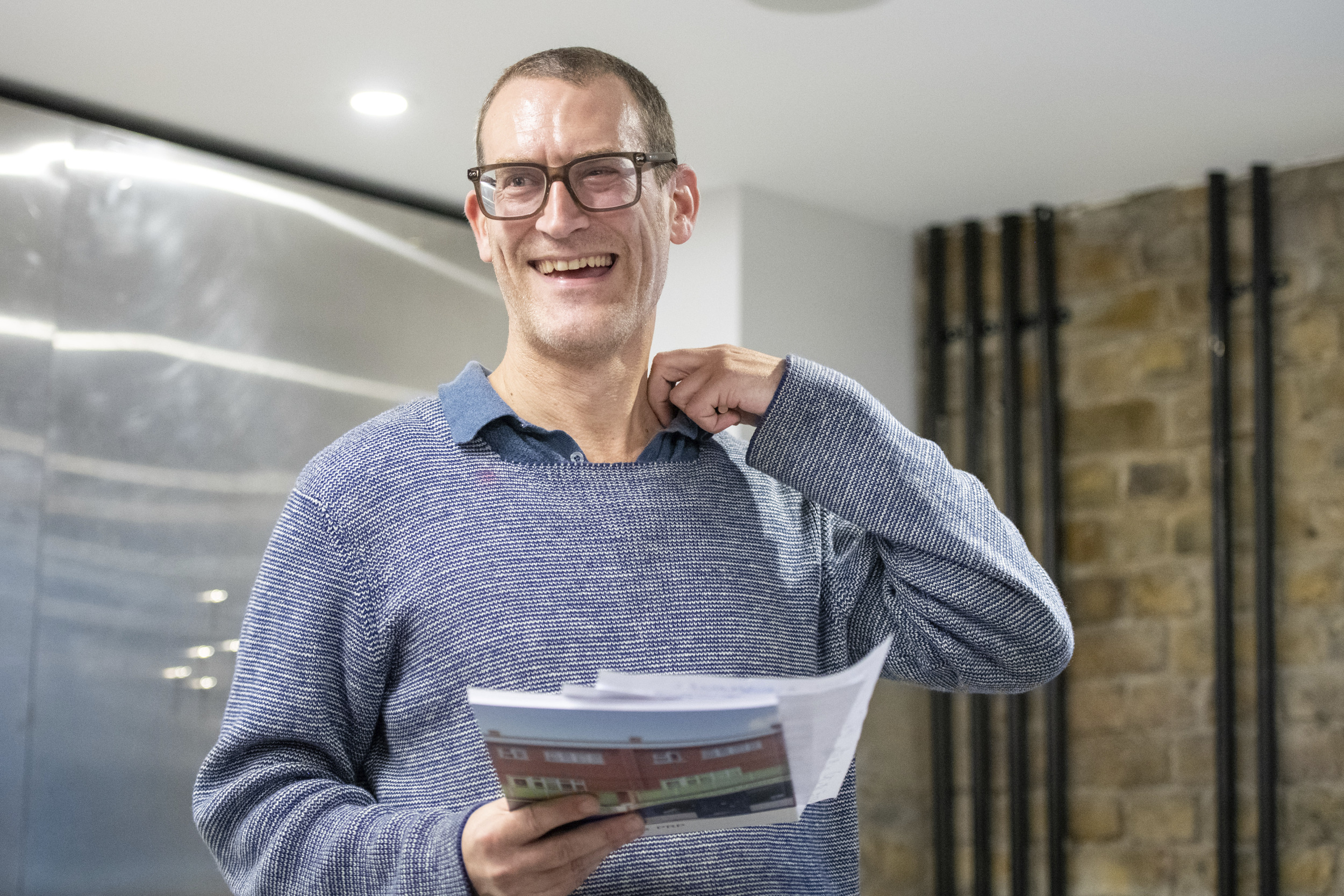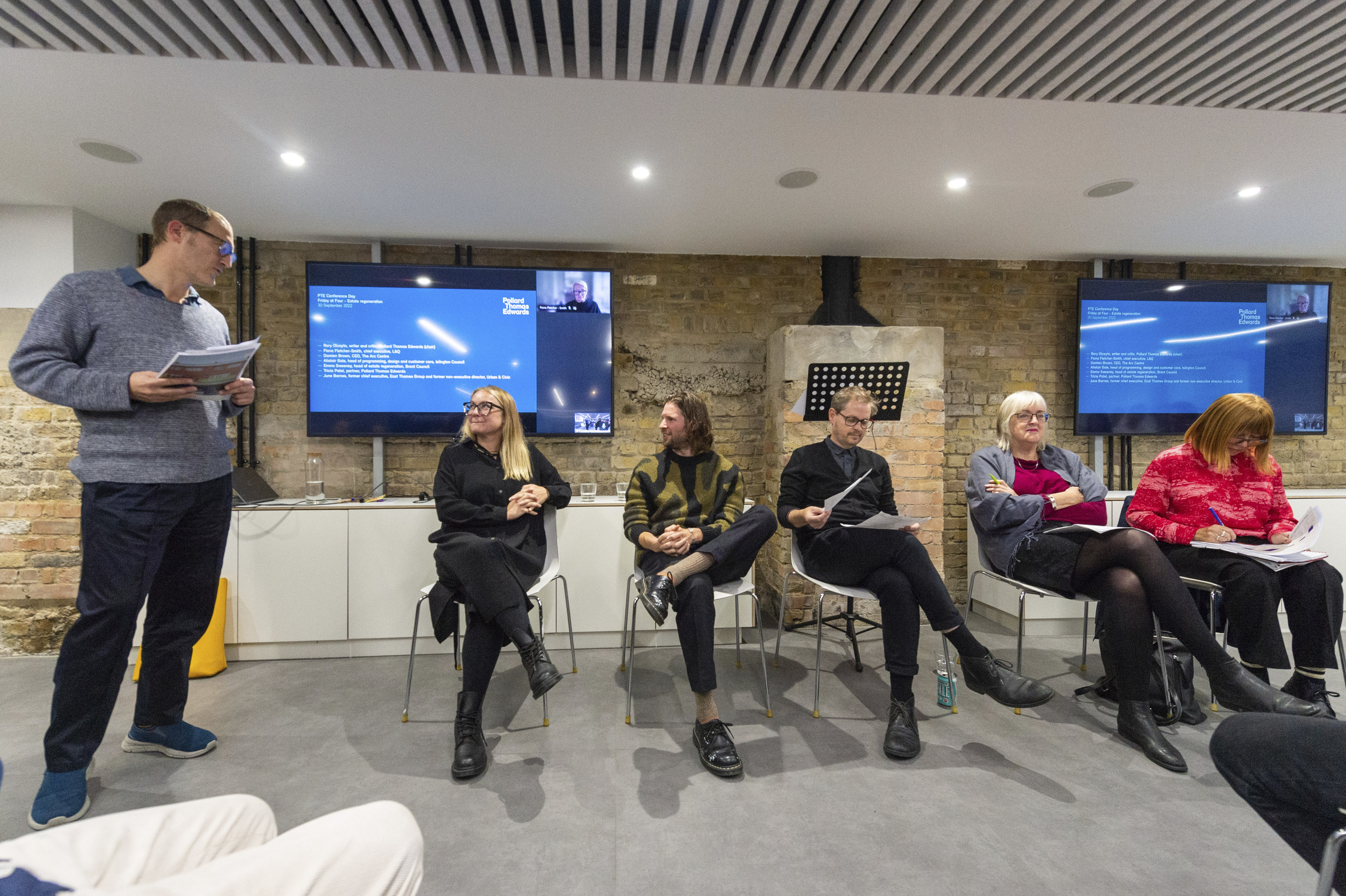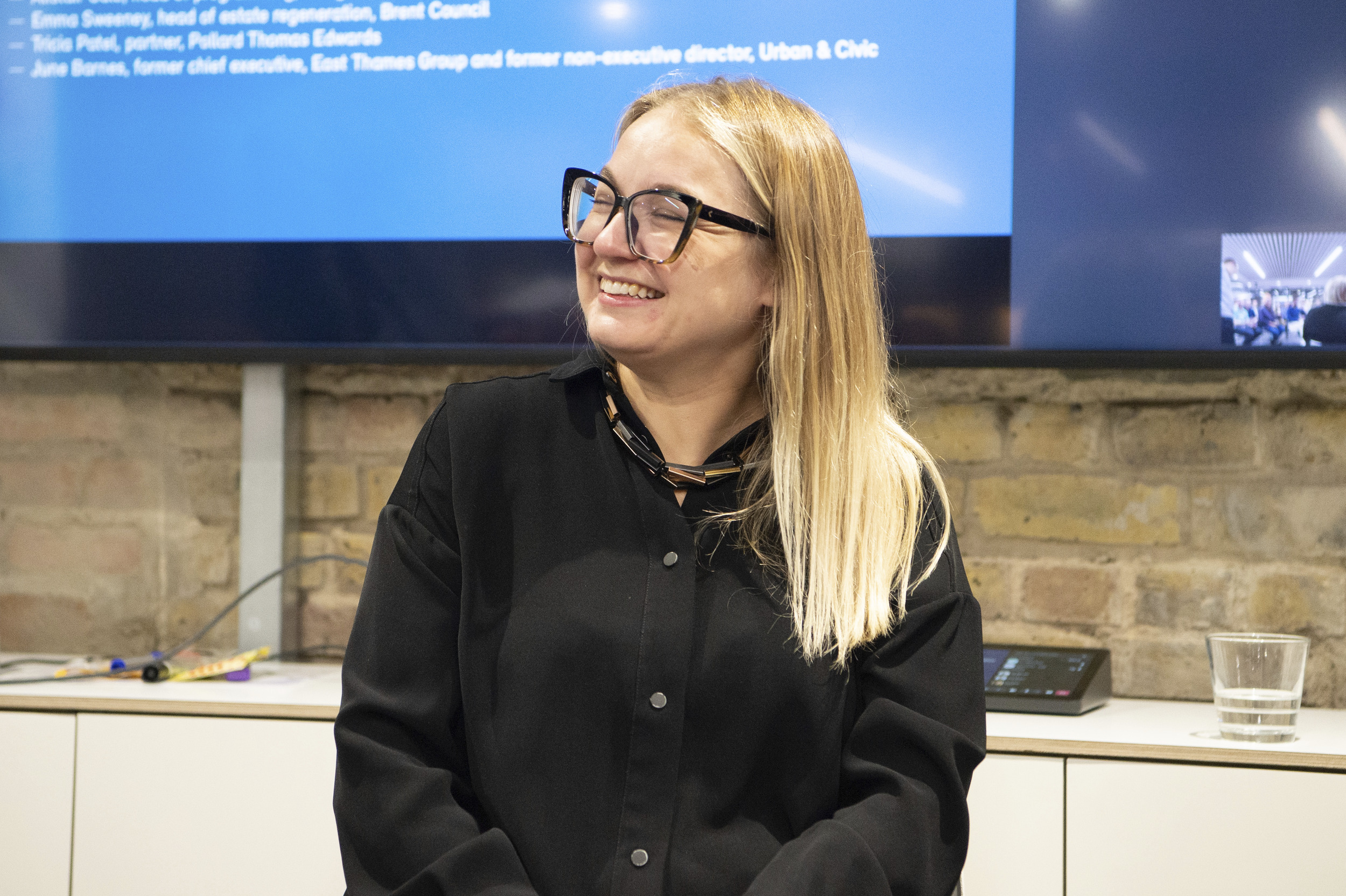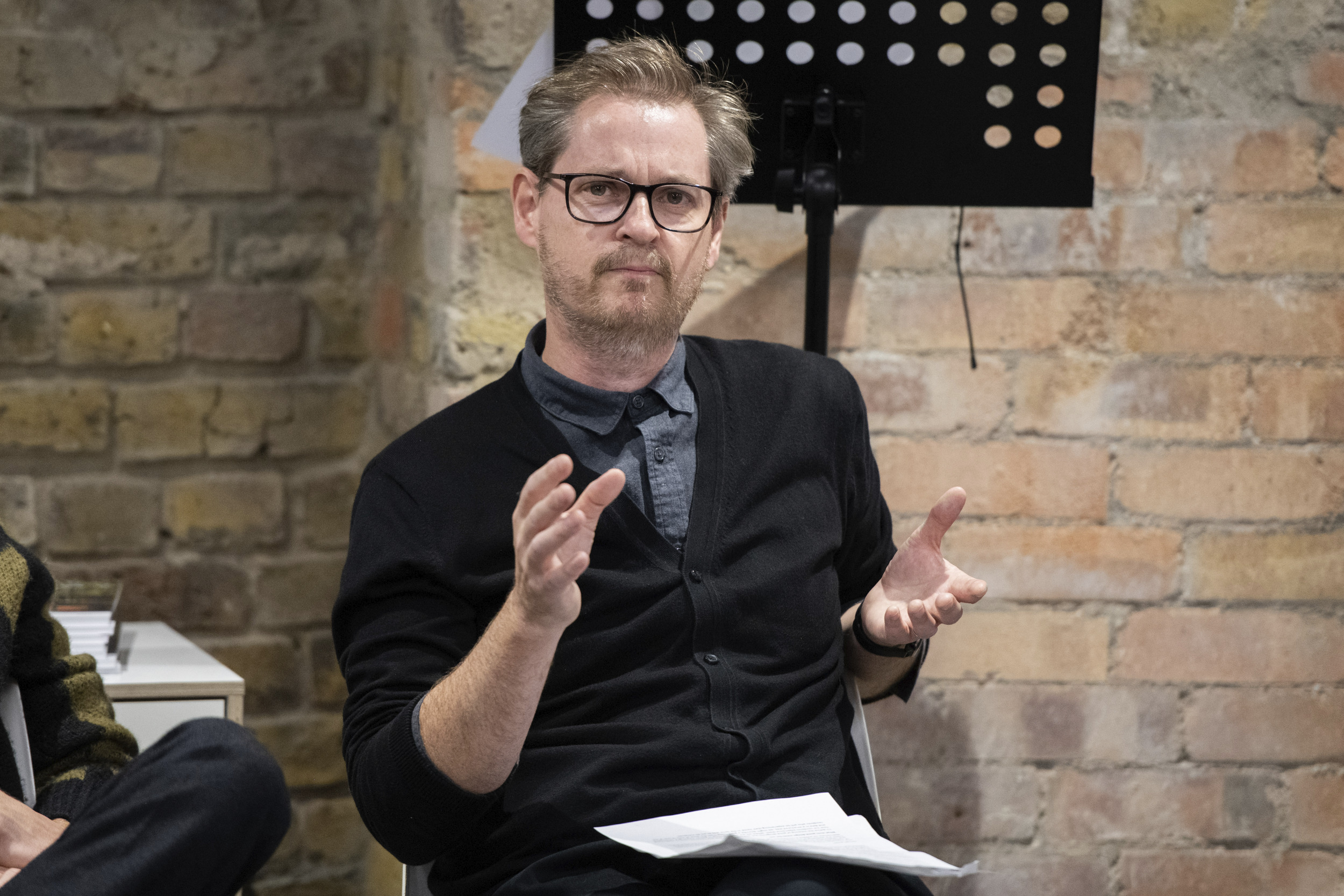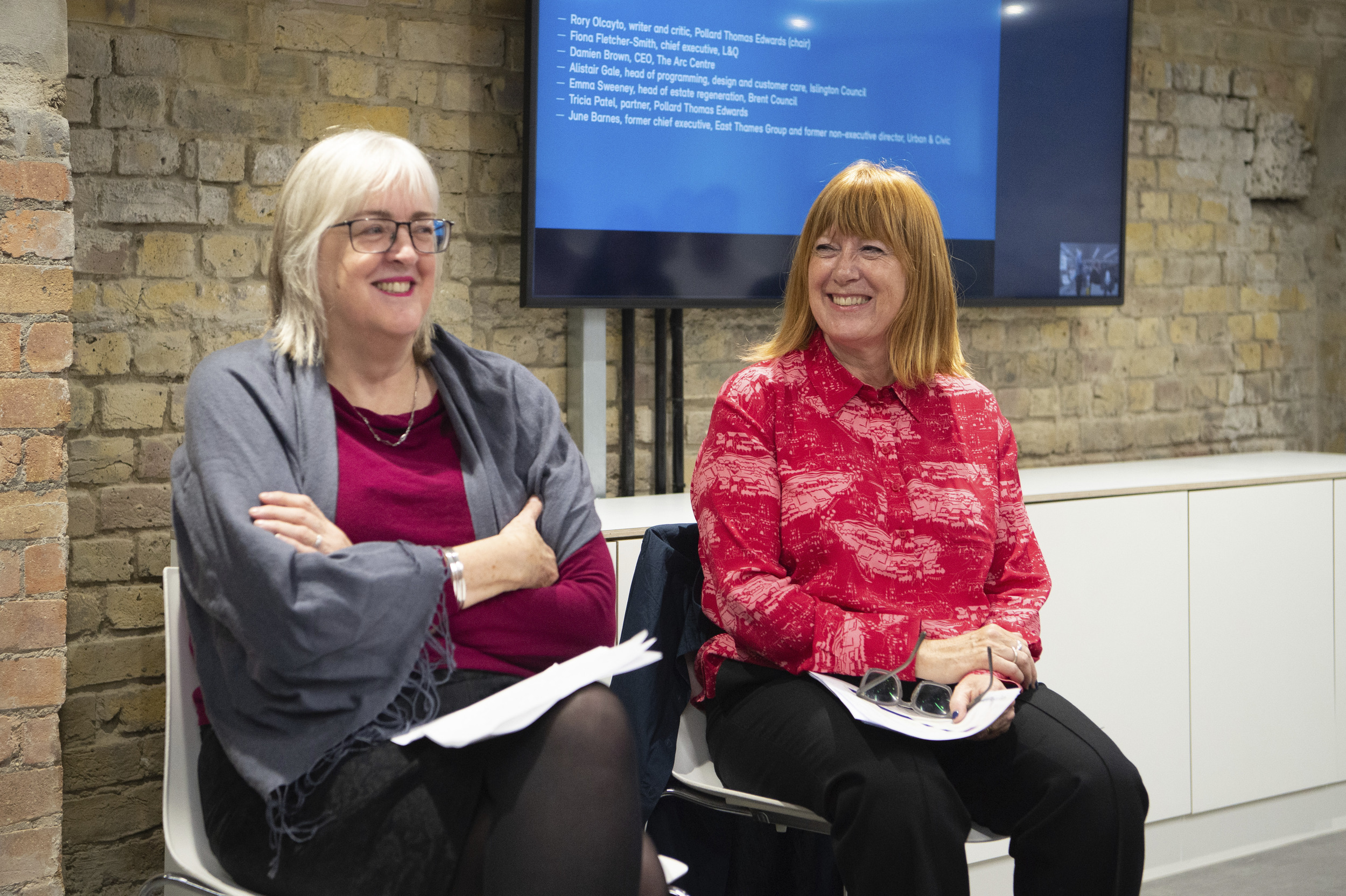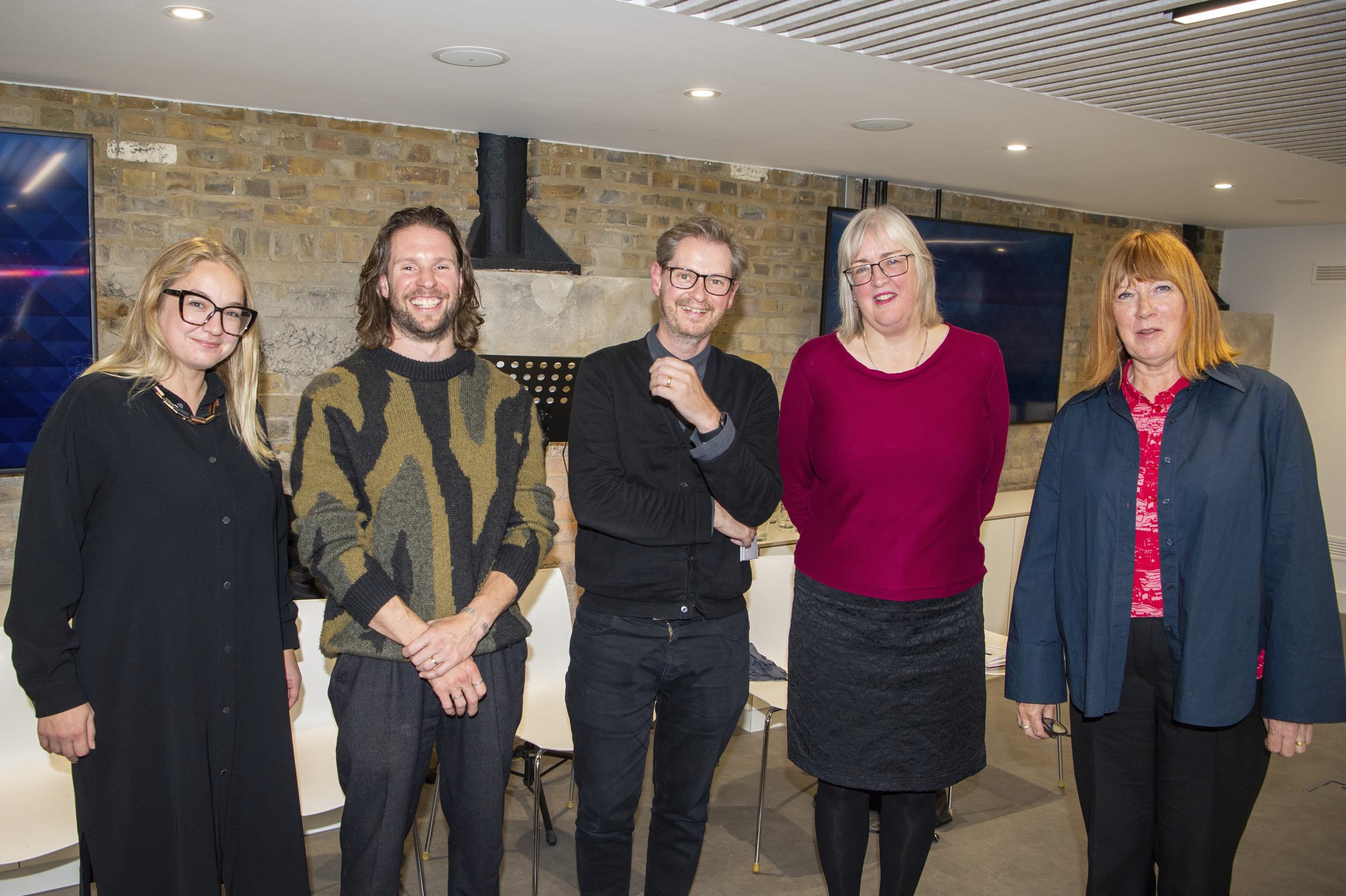PTE Conference Day: Estate regeneration - September 2022
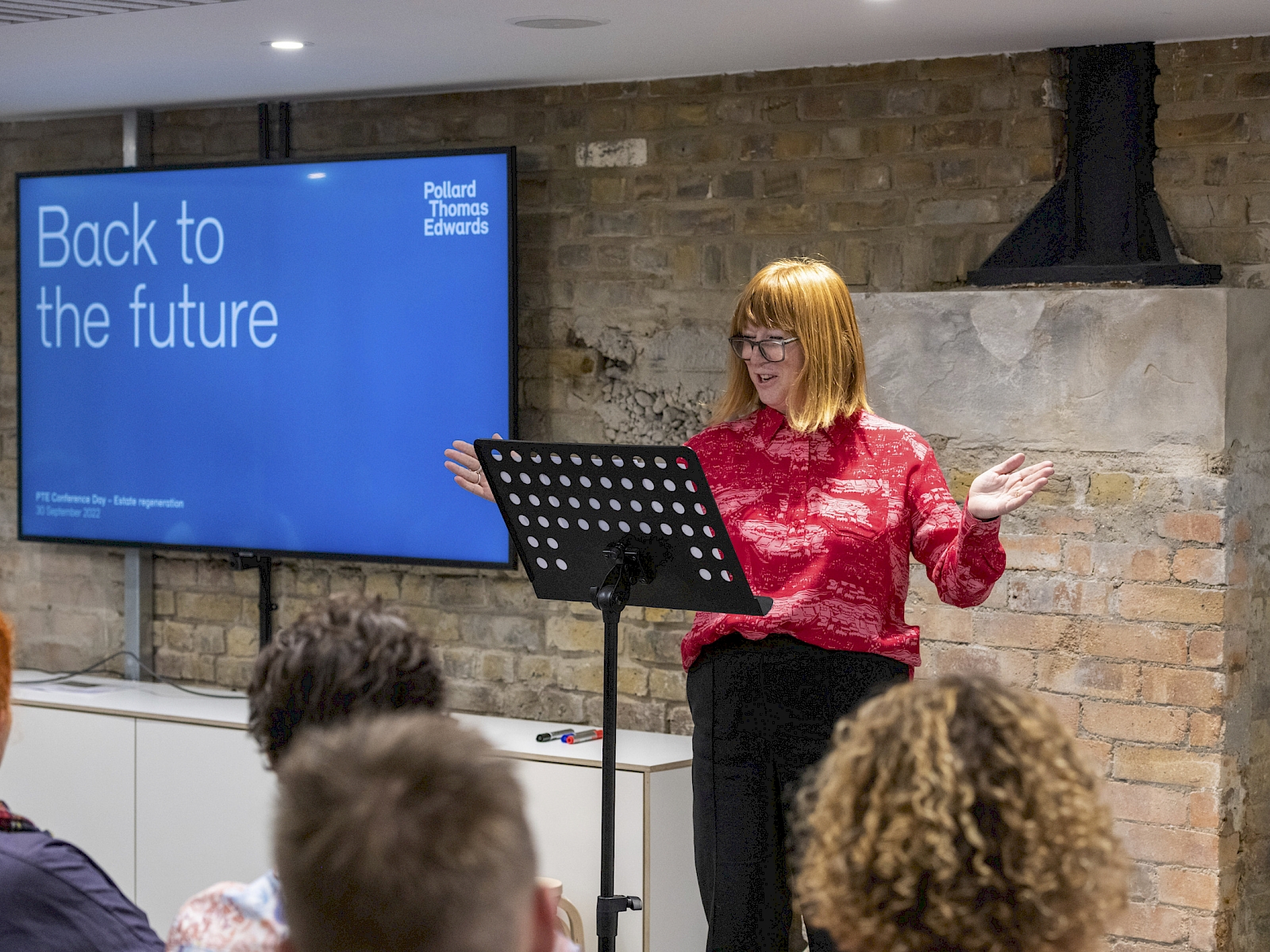
For the first time this year, our morning and afternoon conference day programme had an underlying theme: estate regeneration.
The programme began, for a few colleagues at least, in a regenerative state - with Karen’s yoga class in Canal Dock. After breakfast in the basement Foundation Bar, partner Kaye Stout welcomed everyone to the third conference day of the year in the adjoining Foundation Room. Kaye spoke of national and world events in the news, teeing up Tricia Patel’s through-the-decades presentation of our work in estate regeneration, which was backdropped by a comms team slideshow (with musical soundtrack), capturing the politics, people and culture of the 70s, 80s, 90s, noughties and twenty tens.
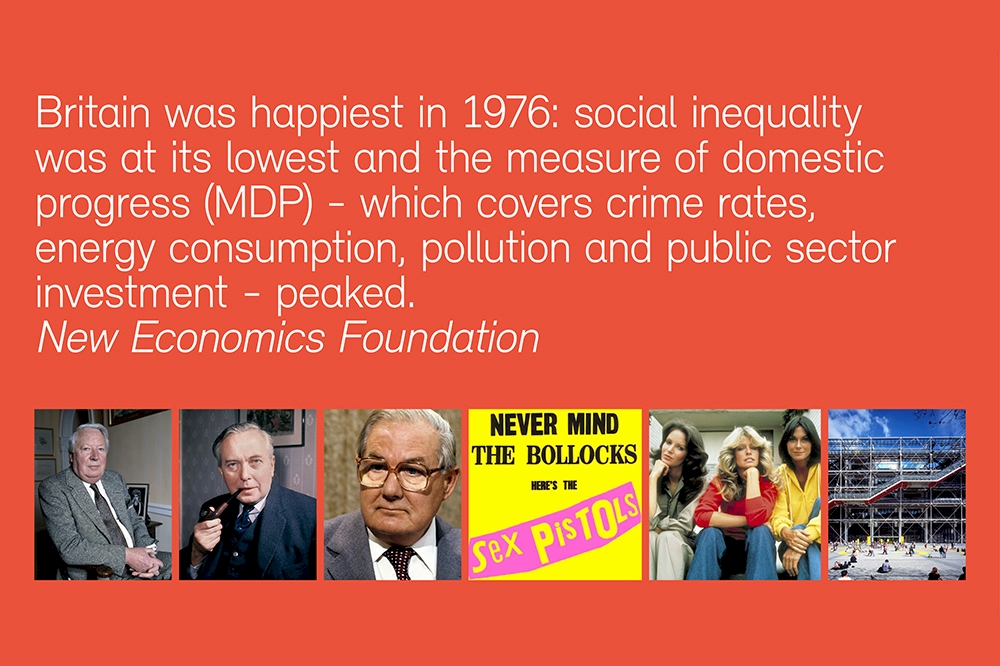
The talk – aided by reference to our recent publication Altered Estates 2, covered how clients, the funding landscape and changing technologies have shaped the nature of our estate regeneration work over the course of 50 years. Packington was a focus too – in particular, the long-term engagement and co-design model we applied there.
Other details – like, how our perception of density in housing has changed since the ‘80s, or how clients and some architects ignored maintenance regimes when specifying new cladding materials in the noughties. The talk concluded with the spotlight on Altered Estates 2 – and the guidance it provides for contemporary estates regeneration.
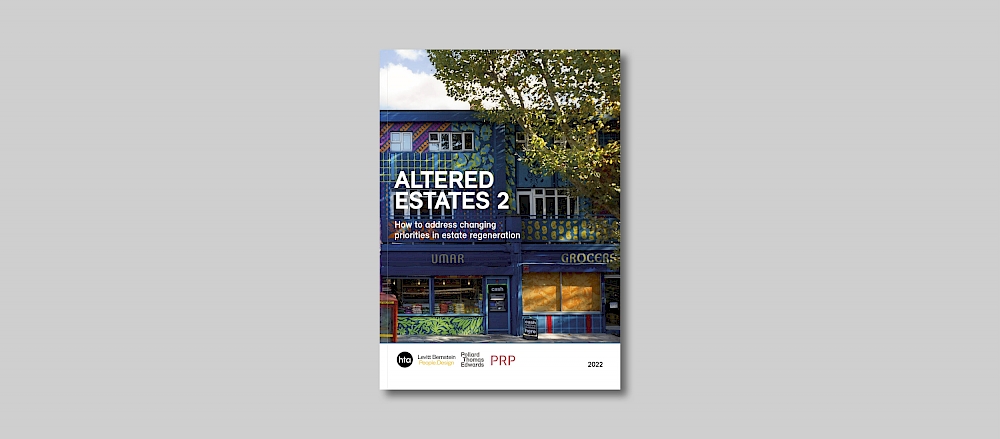
With just one project crit this month (instead of the usual two) the design review of New Orleans Estate – with partners Warrick Thomas, Dominique Oliver and architectural assistant Edward Mack, was rammed. The project in essence, concerns weaving in two infill developments, with navigation and safety a major aspect of the design challenge facing the team. As Domi explained, the site is characterised by inaccessibility with oddly arranged connections between buildings making the journey home feel unsafe.
A discussion developed around residential concerns, with research showing young people did not like the area, while older people did - in the sense that they don't want to be relocated. Everyone however, wanted to feel safer – and more part of a community.
Nina wondered if the team had engaged younger female residents ‘to find out what sort of spaces they'd like to have, and how to make the neighbourhood feel safer’ with Tricia adding that a 'what's in it for me' exercise with the residents has real potential to inspire new ideas around communal living.
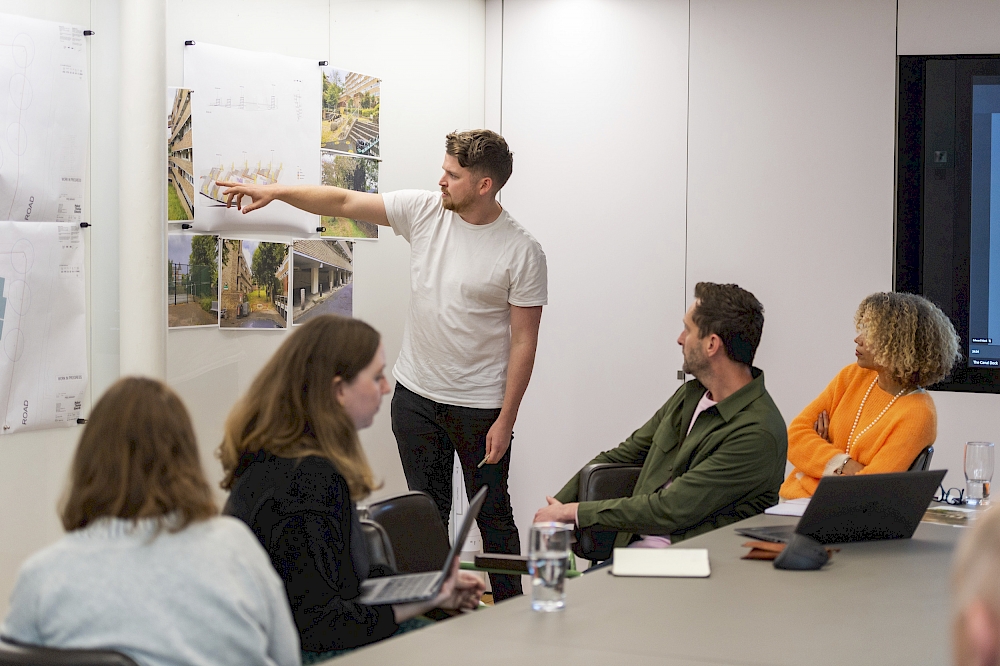
Edward Mack, architectural assistant, Pollard Thomas Edwards
This conference day’s specialist topic – a guide to PTE’s own Sustainability Toolkit and checklist - was presented by partner Tom Dollard, associate Phena MacNamara and sustainable design specialist Filipa Oliveira. In short, these KHub-produced tools help us understand how to better incorporate sustainability principles in our designs and should be used on all projects at key stages. They also provide a guide to the various policies currently in force. Throughout the presentation, the underlying message was clear: understanding the principles and underpinning sustainable design should come before setting targets.
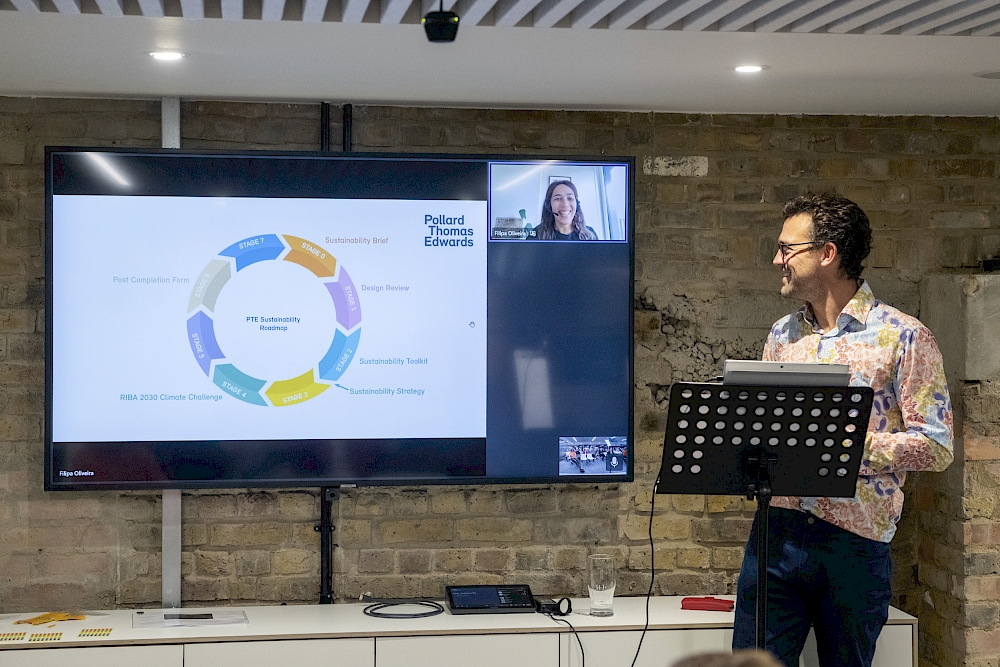
Tom Dollard, partner - sustainability and innovation, Pollard Thomas Edwards and Filipa Oliveira, sustainable design specialist, Pollard Thomas Edwards
Lunch was prepared by design workshop 3. The whole team got involved. As Tricia explains, ‘We had 12 Spanish tortilla makers (there was a lot of discussion on the best method) and eight inventive salad makers who paired up and made it fresh on the day. And my husband made some home-made loaves!’

Tricia and the design workshop 3 brigade
After lunch, partner Charina Coronado led a walking tour to Dover Court Estate, passing many of our other Islington residential projects on the way. The tenure-blind, 70-homes development includes council homes - allocated through the Local Lettings Policy giving existing estate residents priority - and HAPPI-friendly Third Age homes. Charina, explained how many of Dover Court’s details - robust brick architecture, generous open spaces and ample tree coverage - were inspired by the original estate.
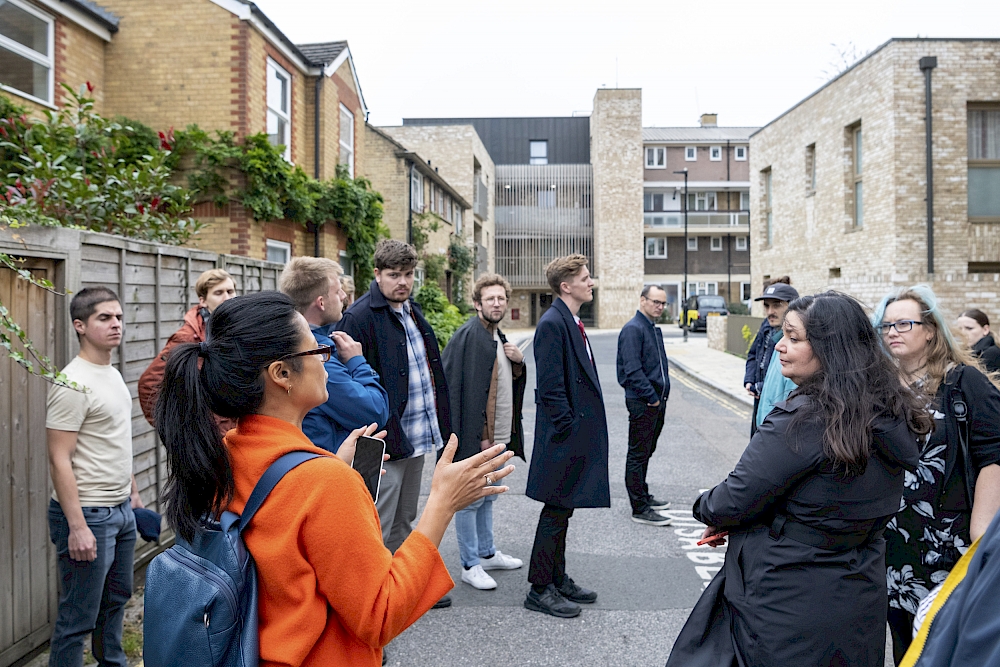
Charina Coronado, partner - quality, Pollard Thomas Edwards
The Wellbeing in Hybrid Working workshop with James Milford (attended mostly by women) explored methods for navigating the new work environment. The workshop explored the challenges of hybrid working, from loneliness to in-person learning and why a ‘shutdown schedule’ is crucial when working from home. But it also looked at how we can adapt to being back in the office; how interacting and our soft skills need to be relearned and how mindfulness can help us manage stress.
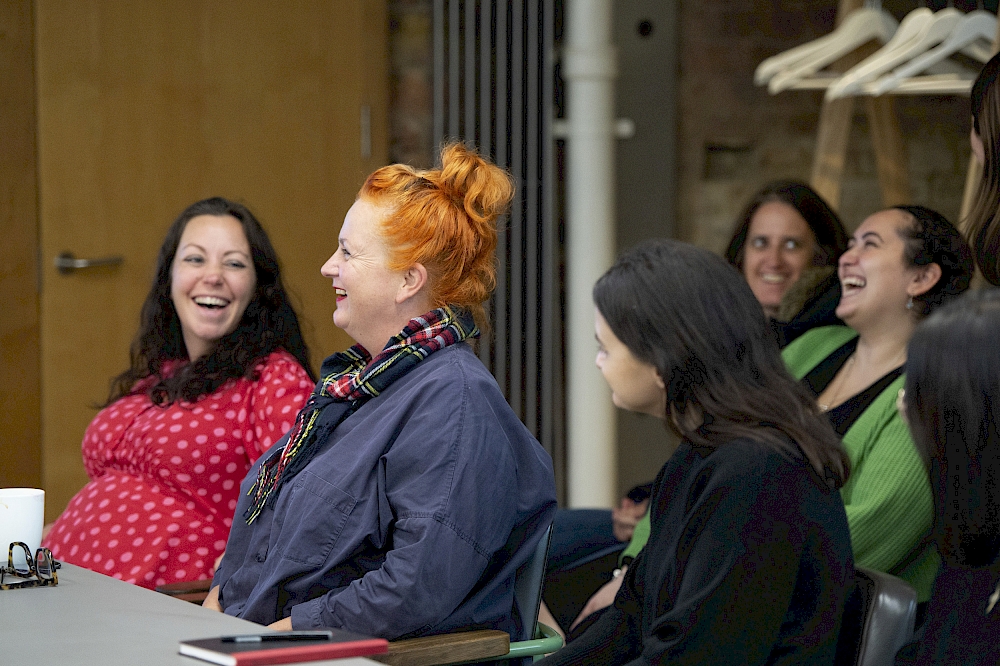
James Milford, behavioural sciences and mindfulness teacher
In parallel with the wellbeing workshop, there were three surgeries: Nikos Georgopoulos showcased place-branding techniques; there was a BIM session with Javier Martin, focused on drawing out the advantages of Ideate; and Alexander Dixon covered Office 365 in an IT surgery.
Friday at Four
In another first for our monthly conference series, Friday at Four featured guest panellists, each of whom spoke for two or three minutes – on topics ranging from rising construction costs (L&Q chief exec Fiona Fletcher-Smith) and the lived experience of estate residents (Damien Brown, CEO of the The Arc Centre) to retrofit versus newbuild (Emma Sweeney, head of estate regeneration, Brent Council) or why not both, in the case of Tricia’s overview of Barnsbury. Alistair Gale discussed co-designing alongside residents while longstanding friend – and former client – June Barnes, the former chief exec of the East Thames Group, was the last to speak before a broader, hour-long conversation with the audience and panellists, ensued.
Friday at Four takeaways







